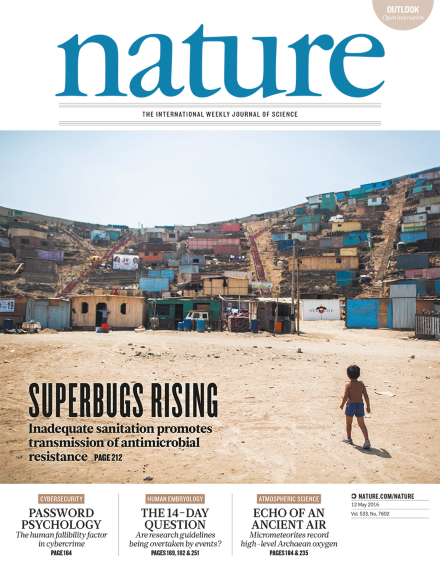Volume 533 Issue 7602, 12 May 2016
Editorial
-
-
Market forces
Collection:
World View
Research Highlights
Social Selection
Seven Days
News
News Q&A
News
Correction
News Feature
Comment
Books & Arts
Correspondence
News & Views
Review Article
Article
Letter
Corrigendum
Feature
Q&A
Futures
Outlook
-
Open innovation
Nature Outlook:
-
A new chapter in innovation
Nature Outlook:
-
Competition: Unlikely partnerships
Nature Outlook:
-
Q&A: Bernard Munos
Nature Outlook:
-
Chemical probes: A shared toolbox
Nature Outlook:
-
Challenges: Crowdsourced solutions
Nature Outlook:
-
Compound screening: Fresh hunting ground
Nature Outlook:
-
Tropical disease: A neglected cause
Nature Outlook:
-
Perspective: Science is still too closed
Nature Outlook:
-
Data sharing: Access all areas
Nature Outlook:

